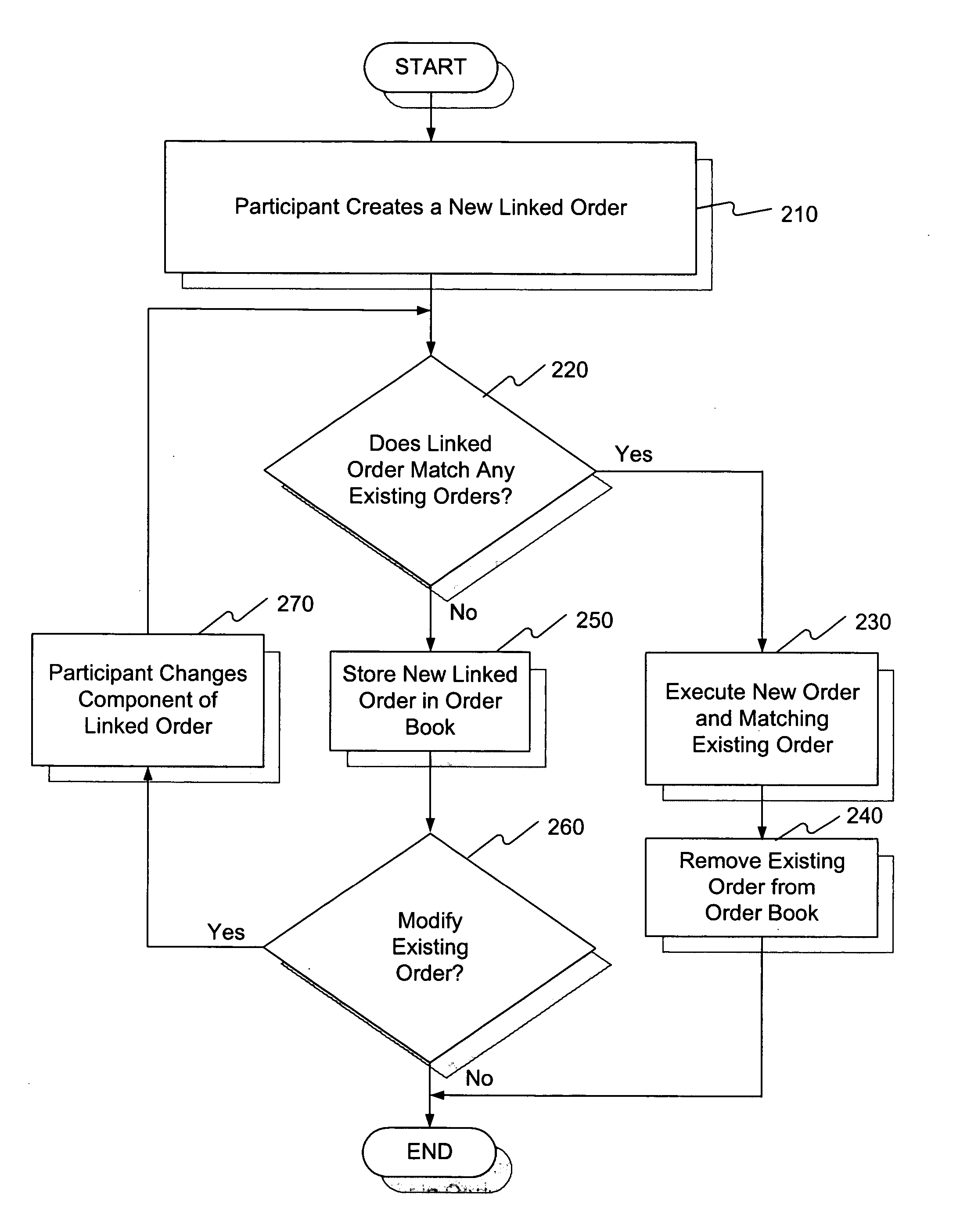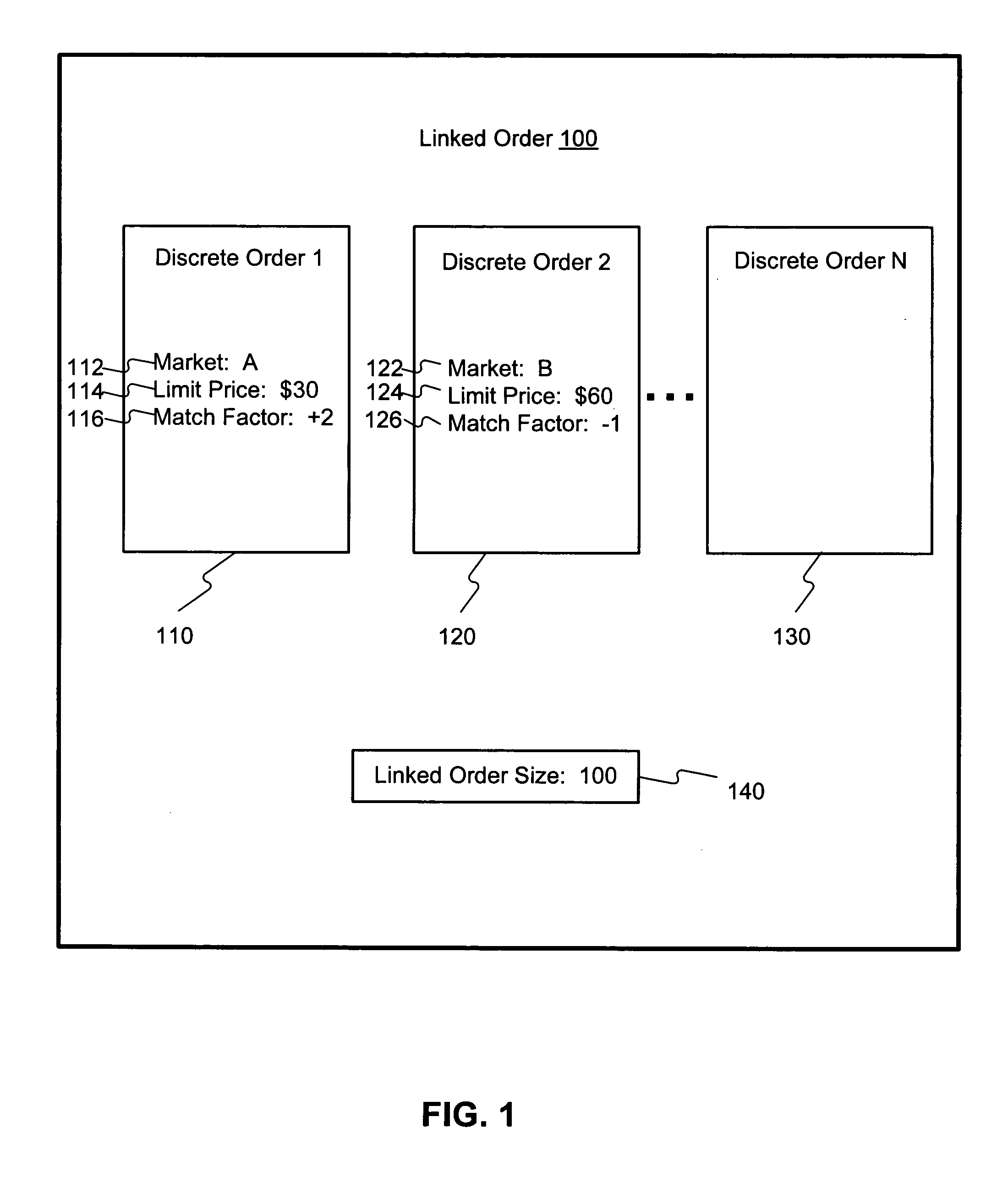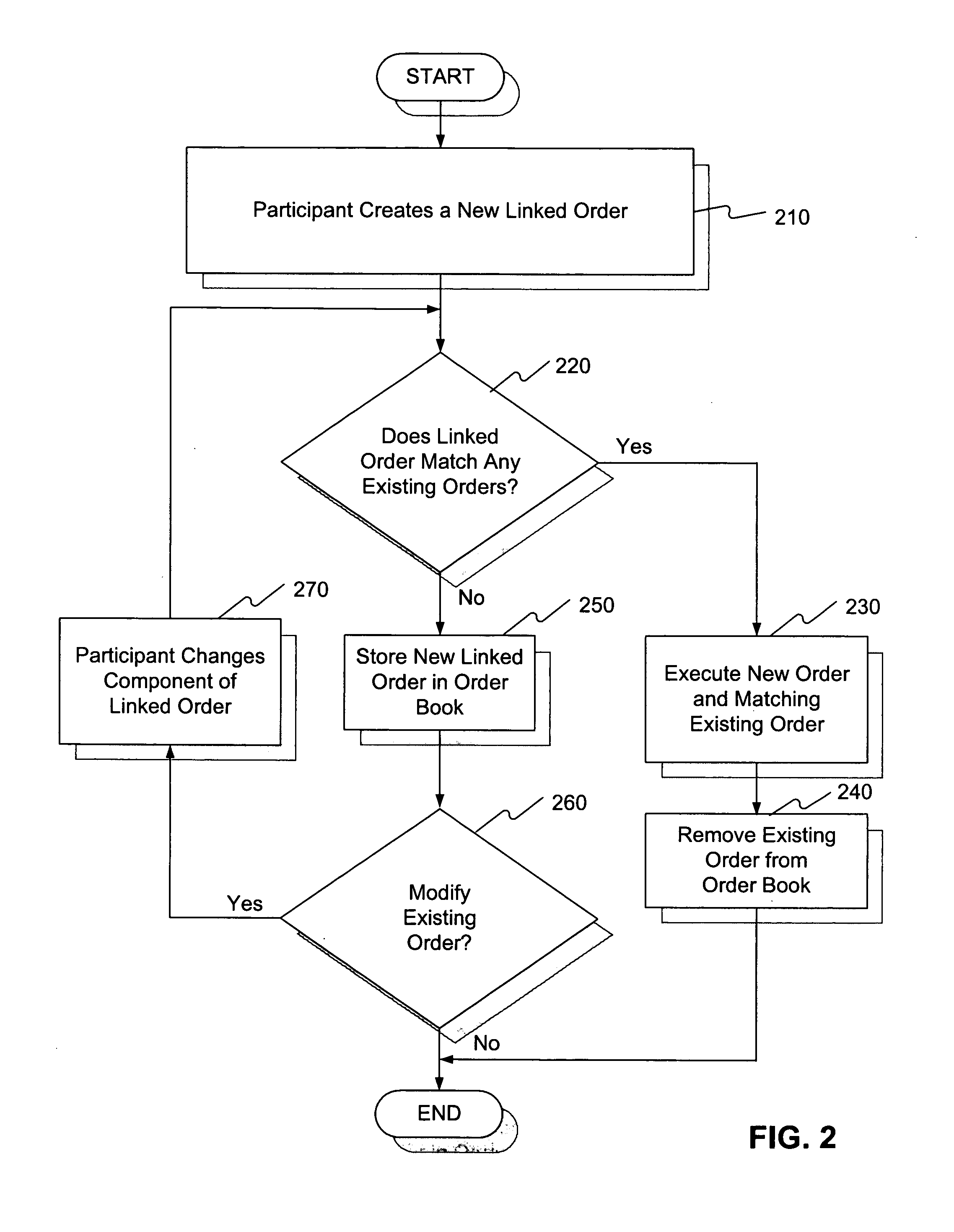Systems and methods for processing multiple contingent transactions
a technology of contingent transactions and systems, applied in the field of automated systems for providing linked markets, can solve the problems of unfavorable variance, inability to guarantee that transactions can be executed on the same terms, and the overall risk of each trading strategy attached to i
- Summary
- Abstract
- Description
- Claims
- Application Information
AI Technical Summary
Benefits of technology
Problems solved by technology
Method used
Image
Examples
Embodiment Construction
[0001] 1. Field of the Invention
[0002] This invention generally relates to automated systems for providing linked markets, and more particularly, to systems and methods for contingent rexecution of linked transactions involving fungible assets.
[0003] 2. Background of the Invention
[0004] For thousands of years organized markets have provided efficient means for valuing and exchanging fungible assets. Market design theory teaches that the economic efficiency and practical benefits of a market tend to improve when the fungible assets traded and the transactions conducted in the market are subject to some degree of standardization and regulation. In response to this teaching, most organized markets operating at present conduct transactions only for a narrowly defined set of fungible assets, permit only a defined set of transaction types to occur within the market, and operate according to an extensive set of rules and regulations that all participants agree to abide by. Markets that ...
PUM
 Login to View More
Login to View More Abstract
Description
Claims
Application Information
 Login to View More
Login to View More - R&D
- Intellectual Property
- Life Sciences
- Materials
- Tech Scout
- Unparalleled Data Quality
- Higher Quality Content
- 60% Fewer Hallucinations
Browse by: Latest US Patents, China's latest patents, Technical Efficacy Thesaurus, Application Domain, Technology Topic, Popular Technical Reports.
© 2025 PatSnap. All rights reserved.Legal|Privacy policy|Modern Slavery Act Transparency Statement|Sitemap|About US| Contact US: help@patsnap.com



